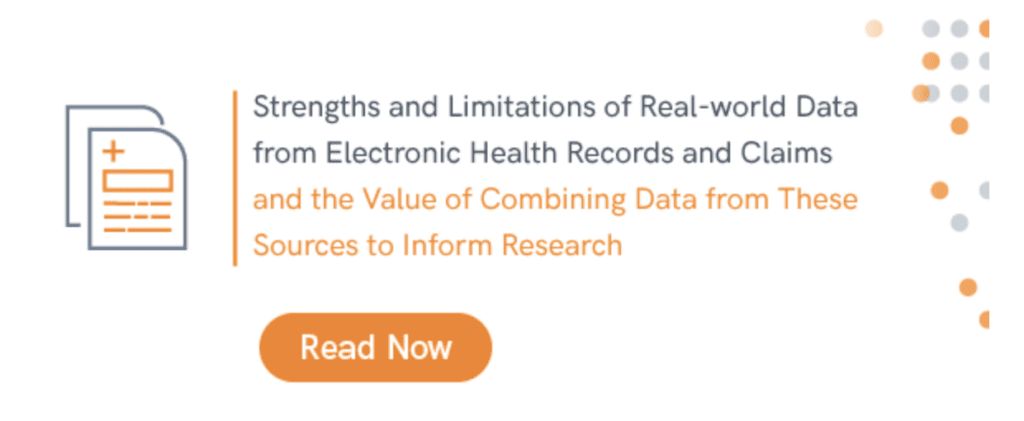EHR data vs. claims data and the power of combining the two real-world data sources
Author:
Verana Health
Life sciences companies traditionally have relied on medical and pharmacy claims data to gain insights into patient populations and treatment utilization in the real world. This real-world data (RWD) is used to guide the development, launch, and commercialization of new therapeutics and medical devices.
But claims data alone, while of value to clinicians and researchers, is not always the best fit datasource. Claims data captures care utilization across the health care system, yet does not include information regarding treatment outcomes, details of diagnostic evaluations, or the patient experience.
Electronic health records (EHRs), however, may contain information lacking in claims data, including a patient’s medical history, symptoms, comorbidities, treatment outcomes, and more. While EHR data provides a wealth of valuable information, it is not necessarily comprehensive or ready to use in its raw form. Limited data and manual documentation can lead to missing information or incorrect information being entered into a patient’s digital record.
With recent advances in technology and data processing capabilities, life sciences and pharmaceutical companies now have the opportunity to extract meaningful insights from linked EHR and claims databases, helping them attain a more complete view of disease trajectory and management. In a white paper titled, “Strengths and Limitations of Real-world Data from Electronic Health Records and Claims, and the Value of Combining Data from These Sources to Inform Research,” Verana Health shares the differences between EHR and claims data as well as explores several life sciences use cases for combining claims and EHR data.

Building a deeper dataset
Combining EHR and claims datasets helps offset the limitations of each as individual sources and allows clinicians and researchers to see previously undetected patterns or connections. Linking EHR and claims data can help life sciences companies stratify subsets of patients based on treatment outcomes, evaluate market performance and product safety, and better understand how physicians are prescribing a commercial drug and the post-approval treatment patterns across multiple therapeutic areas.
Combining EHR and claims data also offers opportunities to mine documentation of patient symptoms, physical exams, diagnostic evaluations, and therapeutic or device utilization to investigate more complex issues surrounding outcomes.
For life sciences companies, these clinical examples translate into deeper insights across the various stages of the drug development lifecycle, including clinical development, market opportunity, trial planning, post-approval, and commercialization.
Ensuring data quality is key
The vast majority of EHR data (estimated up to 80%) is in unstructured form, such as written progress notes by a doctor or nurse regarding a patient’s response to therapy and the disease’s progression. Capturing that data digitally is essential to applying analysis to unlock clinical and research benefits.
In order to structure this data to make it usable, it requires data cleansing, harmonization, curation, and the ability to clinically interpret text-based documentation and experience with artificial intelligence (AI), such as machine learning (ML) and natural language processing (NLP).
Based on Verana Health’s experience, more life sciences companies are recognizing the advantages of linking claims databases with EHRs to generate more in-depth data models that will lead to improvements throughout the drug development lifecycle. Many of these companies have used quality real-world Qdata® modules from Verana Health to combine EHR and claims data in ophthalmology, neurology, and urology in pursuit of improved patient care.
This latest white paper from Verana Health provides background on both EHR and claims as separate data sources, their strengths and limitations in research applications, the power of combining EHR and claims to achieve a more complete picture of disease trajectory and management, and three specific real-world use cases.
Access the full white paper here.

Let's Accelerate Research Together
To learn more about Verana Health, please fill out the information below and our team will follow up with you as soon as possible.

